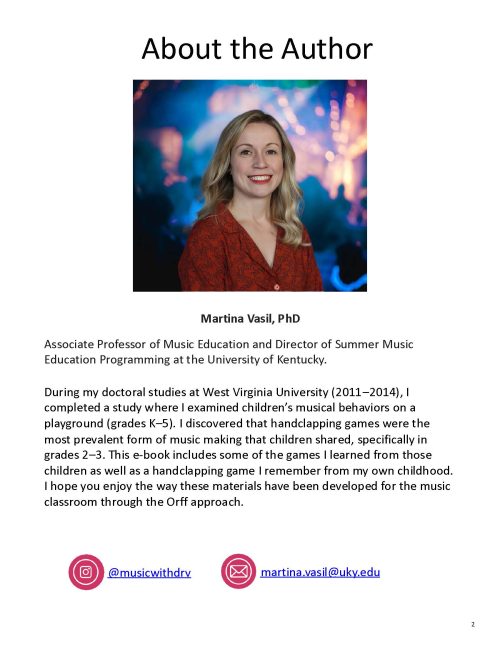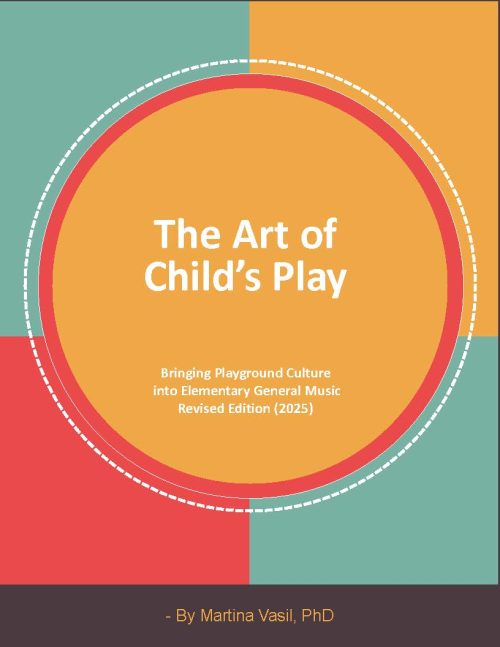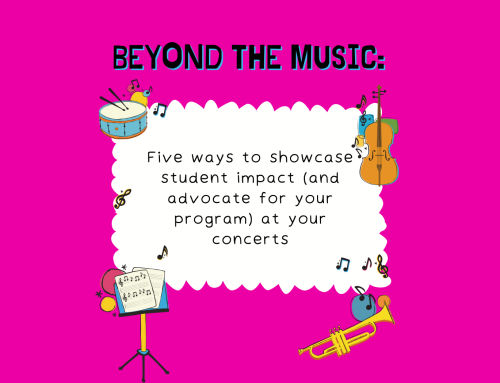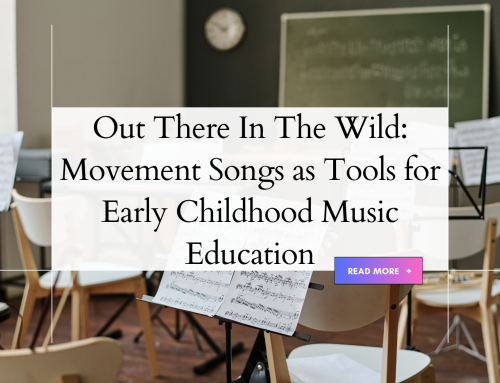 Dr. Martina Vasil is the Assistant Professor of Music Education at The University of Kentucky. In this post, she shares lessons learned from a research project she completed during her doctoral studies. During that study, she observed children at play to learn more about their musical interactions outside of the classroom.
Dr. Martina Vasil is the Assistant Professor of Music Education at The University of Kentucky. In this post, she shares lessons learned from a research project she completed during her doctoral studies. During that study, she observed children at play to learn more about their musical interactions outside of the classroom.
When I set out to collect playground games in 2013, I had a deep concern that I would see nothing—that I would see children outside with tablets and cell phones not interacting with each other. How wrong I was! What I saw were children talking, playing, and musicking as they always have—singing fragments of songs, playing musical games, and dancing. What was new about their play was the integration of media influence. Here are a few examples of what I witnessed.
Table of Contents
Media Influence on Non-musical Play
First, I observed media influence on children’s non-musical play—their conversations. Children discussed various topics with their friends related to media: types of TVs they owned, programs accessed on the TV screen (Netflix, YouTube, Facebook), online games, and movies. They also told me some of their favorite songs as we chatted: “Dead Man’s Party” by Oingo Boingo, “Mirror in the Bathroom” by The Beat, “Thriller” by Michael Jackson, and “Call Me Maybe” by Carly Rae Jepsen.
Media Influences on Musical Play
I observed many more instances of media influence on musical play. On two occasions, I heard melodic fragments as children passed me. One fragment was hummed as the children passed me and sounded like the theme from the cartoon, “The Smurfs” (https://youtu.be/e0kDV6wbIxo?t=16). On the second occasion, I overheard two girls clearly singing a part of Lady Gaga’s “Bad Romance” on “bah, bah” instead of “rah, rah” and the rest of the original text.

Bah, bah, ah-ah, ah-ah! Ro-ma, ro-ma, ma-a! Ga, ga, oh-la, la-a!
Children came up to me and sang parts of songs they knew such as “Country Roads” by John Denver, “Zoot Suite Riot” by Cherry Poppin’ Daddies, and “Lose Control” by Les Rythmes.
A few children sang to me with pop vocal styling. When they sang, they bent notes, used a wide range of notes, and vocalized on the syllables “ooo” or “ahhh.” For example, a little boy sang this to me:
There’s a world out there,
There’s a world out there,
That we will see some time.
Ahhhhhhhh (moving his hand around in the air)
There’s a world out there,
That we can’t see
Oooooo (eyes closed)
There’s a world out there,
there’s a world out there
We can’t see
He told me he heard a boy group singing this song on the Disney channel. Upon closer examination of the words, I discovered a very similar song sung by Nick Jonas, “There’s a World Out There” https://youtu.be/yNKy0AXTUwk?t=78
Here we go, come with me
There’s a world out there that we should see
Take my hand, close your eyes
With you right here, I’m a Rocketeer,
Let’s flyyyyyyyyy
Get Martina’s Book Here:
The children also did pop-inspired movements when they sang to me: spinning in place, closing their eyes, criss-crossing the feet, clapping once and turning, shifting the hips from side to side, and shaking their heads.
Handclapping games were by far the most prevalent form of play that children shared with me, specifically second and third graders. Topics included corporations (McDonald’s), musical icons (Elvis Presley), and products (Pepsi, Big Mac, Captain Crunch). Some were half sung, half chanted to popular melodies: “ABC” by the Jackson 5 and “That’s the Way (Uh-Huh, Uh-Huh) I Like It” by K. C. and the Sunshine Band. In my eBook published through F-flat Books, I share a few of these handclapping games in-depth, such as “Welcome to McDonald’s”.
Concluding Thoughts
Observing children on the playground prompted me to reflect on my teaching practice in a few ways. First, I considered how integrating popular music and culture may help teachers connect with children personally. “Each child brings her unique perspective to a song or instrumental piece, so that its meaning is based on who she is and what her experience has been” (Campbell, 2010, p. 225). Knowing music and media that has meaning for children can help teachers create more relevant learning experiences in the classroom.
Second, it reminded me of the importance of integrating music prevalent in media into the classroom. “Music, including music that children produce and prefer, is replete with phonemes and structures (and repeated melodic and rhythmic patterns) that convey to them, even without words, a sense of familiarity, safety, and stability” (Campbell, 2010, p. 224). Integrating music in the media may help students connect the music they hear outside of school with the music they create within a school setting.
Finally, I thought about how the children shared and transmitted their musicking on the playground and how that could help improve instruction. As Campbell (2010) pointed out, children learn in three ways: enculturation, (natural learning without formal instruction), partially guided lessons (informal in that there are no consecutive directives), and highly structured and sequential lessons. “The first learning type occurs more often outside of school than within, the third more likely within school than on the outside, and the second both in and out of school settings” (Campbell, 2010, p. 230). By addressing more than one learning process, music teachers can optimize instructional time while meeting the needs of their students in the music classroom.
References
Campbell, P. S. (2010). Songs in their heads: Music and its meaning in children’s lives. New
York, NY: Oxford University Press.






Leave A Comment